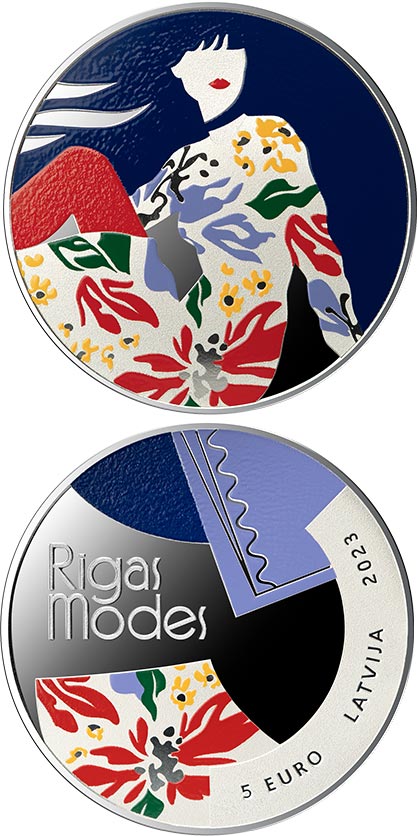5 euro - Riga Fashion
Series: Latvia - Silver 5 euro coins

The concept of Riga fashion is widely known, and it describes an active period in the history of Latvia's fashion in the 1960s–1980s when the company Riga Fashion House (1948–1997) and the favourite magazine Rīgas Modes (Riga Fashion; 1949–1993) flourished and gained popularity. That period also saw the creation of the fashion centre Riga Fashion located in a specifically designed building (in Brīvības iela, Riga).
An emancipated, confident woman with her own style and attitude has always been and still is the principal character of Riga fashion. The story of Riga fashion involves more than clothes, footwear and accessories. In the context of the 1960s–1980s, fashion is a complex concept covering the textile industry from sewing at home to mass production of clothes and fabrics in the territory of Latvia. It also includes graphic design for printing on fabrics, the creation of texts, typefaces and other means of communication, including fashion shows, their scenography and music.
Riga fashion serves as a keyword not only for style but also for thousands of women involved in the fashion industry. Fashion has also been a form of protest, i.e. an opportunity to express one's individuality, an opportunity to be different, to distance oneself from the Soviet time mass-produced goods and dissociate oneself from ideology of that period.
The graphic design of the coin has been created by artist and fashion illustrator Alīna Grīnpauka – a world-renowned and demanded fashion illustrator. The artist has cooperated with the fashion brands such as Valentino, Alberta Ferretti and Tiffany & Co. She is one of the hundred illustrators from across the world featured in the book "The Illustrator. 100 Best from around the World" published by the prestigious publishing house Taschen.
Many women have very vivid and personal memories of the magazine Rīgas Modes. The artist's message is that the value of the magazine was not limited to the distribution of silhouettes and patterns for making clothes. It contributed to forming a sense of taste and style and demonstrated the standard of beauty which also underpin the visual concept of the coin. The reverse of the coin features stylised patterns for making clothes, as each edition of the magazine Rīgas Modes was worth its weight in gold, and it was passed from hand to hand.
Watch th